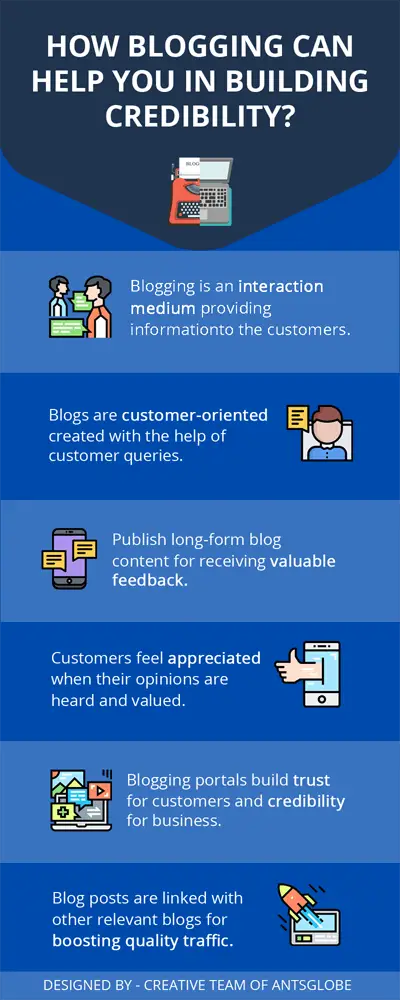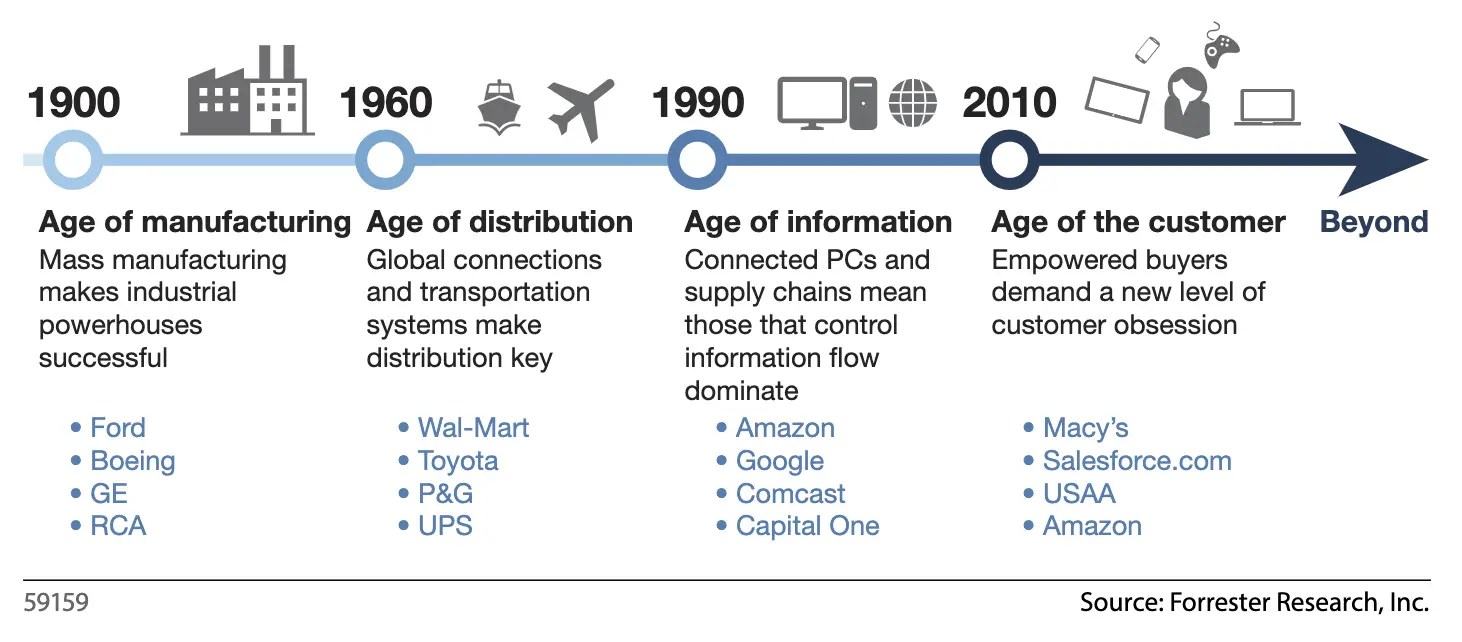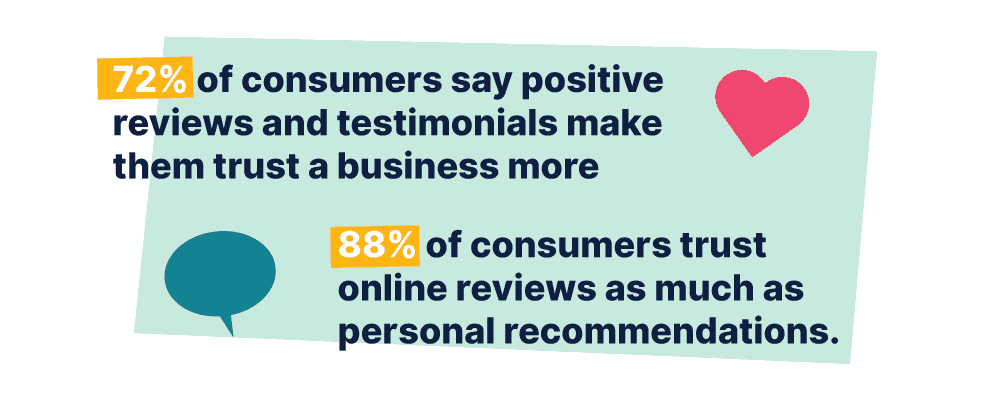If you’re looking to build trust and credibility for your blog or online business in Kenya, customer testimonials are one of the most effective tools at your disposal. By showcasing the positive experiences and feedback from your satisfied customers, testimonials provide social proof and instill confidence in potential customers. Whether it’s featuring testimonials on your website, sharing them on social media, or incorporating them into your marketing materials, leveraging customer testimonials can help establish your credibility and attract more customers to your blog or online business in Kenya.

This image is property of www.postmediasolutions.com.
1. Display Testimonials on Your Website
1.1 Testimonials on the Homepage
One of the best ways to build trust and credibility for your blog or online business in Kenya is by displaying testimonials on your website. Start by featuring testimonials on your homepage, which is typically the first page visitors see when they arrive at your site. This helps create a positive first impression and immediately establishes trust with potential customers.
Choose testimonials that highlight the positive experiences that previous customers have had with your blog or online business. Include their name, photo (with their permission), and a brief quote that emphasizes the value they received from your products or services. By showcasing happy and satisfied customers right on your homepage, you are demonstrating social proof and showing visitors that your blog or online business is trustworthy and reliable.
1.2 Testimonials on Product Pages
In addition to featuring testimonials on your homepage, it’s also beneficial to include testimonials on your product pages. This allows potential customers to see how others have benefited from specific products or services they are interested in. Make sure the testimonials are relevant to the specific product or service being showcased on the page.
When selecting testimonials to display on your product pages, focus on those that specifically address the benefits or features of the product in question. This helps potential customers understand how the product can meet their needs and solve their problems. Including testimonials on these pages reinforces the credibility of your blog or online business and increases the likelihood of conversion.
1.3 Testimonials on Landing Pages
Another strategic placement for testimonials is on your landing pages. Landing pages are specifically designed to capture leads or prompt visitors to take a specific action, such as signing up for a newsletter or making a purchase. By including testimonials on these pages, you are providing social proof to potential customers and showing them that others have successfully taken the desired action.
Choose testimonials that highlight the positive outcomes that previous customers have experienced after taking the desired action on the landing page. Whether it’s signing up for a newsletter or purchasing a product, showcasing testimonials can help alleviate any doubts or concerns potential customers may have and encourage them to take the desired action.
2. Use Video Testimonials
2.1 Film Authentic and Engaging Videos
In today’s digital landscape, video content is highly engaging and can effectively capture the attention of your audience. Incorporating video testimonials into your marketing strategy can be a powerful way to build trust and credibility for your blog or online business in Kenya. By featuring real customers sharing their experiences in video format, you can provide a compelling and authentic portrayal of the value your blog or online business offers.
When filming video testimonials, focus on creating a comfortable and relaxed environment for your customers. Encourage them to speak naturally and share their genuine experiences. Authenticity is key in building trust, so avoid scripting their testimonials too heavily. Instead, provide them with prompts or questions to guide their storytelling.
2.2 Highlight Different Customer Experiences
Diversity in customer experiences can greatly enhance the impact of your video testimonials. Use these opportunities to showcase a range of customers from different backgrounds, age groups, professions, or locations. By featuring a variety of voices and stories, you demonstrate the broad appeal and relevance of your blog or online business.
When planning your video testimonials, consider reaching out to customers who represent different demographics or industries. This diversity will resonate with a broader audience and increase the relatability of your testimonials. Remember, the goal is to build trust and credibility, so the more varied and authentic the experiences featured in your videos, the stronger your brand image will become.
2.3 Include Video Testimonials on Your Website
To make the most of your video testimonials, ensure they are prominently displayed on your website. Create a dedicated section on your homepage or product pages where visitors can easily find and view the videos. Consider embedding the videos directly on the page or providing links to a video gallery.
Additionally, leverage your social media channels and email marketing campaigns to share these video testimonials. By reaching a wider audience, you can maximize the impact of these authentic and engaging customer stories. Remember, ease of access is crucial, so make sure your video testimonials are easily viewable and shareable across various platforms.

This image is property of antsglobe.com.
3. Leverage Social Media Platforms
3.1 Share Testimonials on Social Media
Social media platforms such as Facebook, Twitter, and Instagram provide a powerful platform for sharing customer testimonials and building trust and credibility. These platforms offer a wide reach and allow for easy engagement with your audience, making them ideal for showcasing positive experiences and interactions with your blog or online business in Kenya.
Create visually appealing graphics or posts featuring customer testimonials and share them across your social media accounts. Include an engaging caption or comment that highlights the key message or benefit conveyed by the testimonial. Encourage your followers to engage with the post by sharing their thoughts or experiences.
3.2 Encourage Customers to Leave Reviews
Customer reviews are a valuable form of social proof. Actively encourage your customers to leave reviews on platforms such as Google My Business, Facebook Reviews, or industry-specific review sites. Positive reviews not only serve as testimonials but also contribute to your overall reputation and search engine rankings.
Make it easy for customers to leave reviews by including links or direct instructions in your customer communications or on your website. Consider offering incentives, such as exclusive discounts or rewards, to motivate customers to share their feedback. Regularly monitor and respond to reviews, both positive and negative, to demonstrate your commitment to customer satisfaction and engagement.
3.3 Create Social Media Campaigns
Take your social media testimonials to the next level by creating dedicated social media campaigns. This involves actively engaging with your audience and encouraging them to share their experiences with your blog or online business using branded hashtags or campaign-specific prompts.
For example, you can create a campaign encouraging customers to share photos or videos of themselves using your products or services, along with a testimonial highlighting their positive experience. This user-generated content not only provides additional testimonials but also encourages others to engage with your brand and contribute their own stories.
4. Utilize Email Marketing
4.1 Include Testimonials in Email Campaigns
Email marketing is an effective tool for nurturing relationships with your audience and increasing customer loyalty. Incorporating customer testimonials into your email campaigns can significantly boost engagement and establish trust and credibility.
Integrate testimonials into your email newsletters or promotional emails to showcase how your blog or online business has positively impacted previous customers. Highlight specific benefits or outcomes, and provide links for readers to explore further on your website. Personalize your emails whenever possible by addressing recipients by name and tailoring the testimonials to their interests or needs.
4.2 Request Testimonials from Satisfied Customers
Don’t be afraid to reach out to your satisfied customers and ask for testimonials. Many customers are happy to provide feedback and share their positive experiences with your blog or online business, especially if they have had a particularly good experience or achieved significant results.
Consider sending personalized emails or using automated tools to request testimonials from customers. Make the process as easy as possible by providing specific questions or prompts that guide them in crafting their testimonial. If feasible, offer an incentive, such as a discount or exclusive content, as a token of appreciation for their time and effort.
4.3 Feature Testimonials in Newsletters
Your email newsletters are an excellent platform for featuring customer testimonials. Devote a section of your newsletters specifically to showcasing testimonials and sharing success stories. This regular inclusion of testimonials reinforces the credibility of your brand and keeps your audience engaged and informed about the positive experiences others have had with your blog or online business.
When featuring testimonials in newsletters, consider including captivating visuals, such as customer photos or logos, to enhance the impact. Include links or calls to action that direct readers to explore further or share their own experiences. This helps foster a sense of community and encourages active engagement with your brand.

This image is property of salesblink.io.
5. Collaborate with Influencers
5.1 Partner with Influencers for Testimonials
Influencer marketing has gained significant traction in recent years and can be a powerful way to leverage the reach and credibility of popular influencers to build trust for your blog or online business. Collaborate with influencers in your industry or niche and ask them to provide testimonials based on their experiences with your products or services.
Identify influencers whose values align with your brand and reach out to them with a personalized proposal. Offer them a complimentary experience with your blog or online business and ask for their feedback or testimonial in return. This partnership can not only provide you with valuable testimonials but also expose your brand to a wider audience who trusts and follows the influencer.
5.2 Have Influencers Share Testimonials
Building on the partnership established with influencers, encourage them to share their testimonials on their own social media platforms or blogs. This amplifies the reach of the testimonials and exposes your brand to a broader audience. Their endorsement and testimonial can significantly enhance your credibility among their followers.
Provide influencers with tailored content or graphics featuring their testimonial that they can easily share on their platforms. Collaborate with them to ensure consistency in messaging and branding. By mutually promoting each other, you can establish a symbiotic relationship that benefits both parties.
5.3 Amplify Testimonials through Influencer Networks
In addition to partnering with individual influencers, consider leveraging influencer networks or marketing agencies to amplify your testimonials. These networks can connect you with a wider range of influencers who have the potential to reach different target audiences.
Engage with these networks to identify influencers who have successfully provided testimonials for similar businesses or industries. Collaborate with them to create engaging and inspiring content that highlights their experiences and the value they have gained from your blog or online business. By tapping into influencer networks, you can expand your reach and build trust with a diverse range of potential customers.
6. Participate in Online Review Platforms
6.1 Claim and Optimize Your Business Profile
Online review platforms, such as Google My Business, Yelp, or TripAdvisor, provide opportunities for customers to leave reviews and testimonials for your blog or online business. It is crucial to claim and optimize your business profile on these platforms to actively manage your online reputation and maximize your exposure.
Claiming and optimizing your business profile involves ensuring that all relevant information, such as your business name, contact details, and website URL, are accurate and up to date. Add high-quality visuals, such as your logo or images of your products or services, to enhance your profile. Regularly monitor and respond to reviews, both positive and negative, to demonstrate your commitment to customer satisfaction and engagement.
6.2 Respond to Customer Feedback
When it comes to online reviews, active engagement is key. Respond to customer feedback promptly and professionally, whether it’s a positive review or a complaint. This demonstrates your responsiveness and commitment to customer satisfaction, which builds trust with potential customers who may be reading these reviews.
Express gratitude for positive reviews and engage in meaningful conversations with customers who have expressed concerns. Address any issues raised in a courteous manner and provide practical solutions when appropriate. Your willingness to listen and respond showcases your dedication to customer happiness and can turn negative experiences into positive ones.
6.3 Encourage Happy Customers to Leave Reviews
A proactive approach to generating online reviews is to encourage your happy customers to leave feedback on review platforms. Make it a seamless and easy process by including links to review platforms in your post-purchase communications or follow-up emails.
Consider offering incentives, such as exclusive discounts or entry into a giveaway, to motivate customers to leave reviews. Reinforce the value their feedback brings to your business and explain how their testimonials can help other potential customers make informed decisions. By actively encouraging reviews, you can build a strong collection of testimonials that highlight the positive experiences customers have had with your blog or online business.

This image is property of d1eipm3vz40hy0.cloudfront.net.
7. Create Case Studies
7.1 Identify Success Stories
Utilize the power of case studies to provide detailed narratives of how your blog or online business has helped customers achieve their goals or solve their problems. Identify successful customer stories that highlight the impact of your products or services and demonstrate real-world results.
Look for customers who have experienced significant transformations or achieved notable success through their partnership with your blog or online business. These success stories can serve as powerful testimonials and showcase the unique value you offer. Collect relevant data and metrics to support the case studies and demonstrate the tangible benefits your blog or online business delivers.
7.2 Outline the Problem, Solution, and Results
Structure your case studies in a clear and concise format, outlining the problem or challenge the customer faced, the solution or approach provided by your blog or online business, and the results or outcomes achieved. This format helps potential customers understand the context, relevance, and impact of your products or services.
Include customer quotes or testimonials throughout the case study to provide authentic voices and perspectives. Use visuals, such as before-and-after images or infographics, to visually illustrate the transformations or results. By presenting a compelling narrative with tangible evidence, you can effectively build trust and credibility for your blog or online business.
7.3 Publish Case Studies on Your Blog or Website
Once you have created engaging case studies, publish them on your blog or website. Create a dedicated section or landing page where visitors can easily access and explore your case studies. Consider organizing them by industry, problem type, or desired outcomes for easy navigation.
Promote your case studies across your various marketing channels, such as social media, email newsletters, or industry forums. Share snippets or highlights from the case studies to capture the attention and interest of your audience. By providing in-depth and compelling stories of success, case studies can significantly contribute to building trust and credibility for your blog or online business.
8. Display Ratings and Reviews
8.1 Use Star Ratings for Products or Services
Using star ratings for your products or services is a widely recognized and understood method of displaying customer feedback and testimonials. Incorporate star ratings on your product pages, landing pages, or even in search engine results to give potential customers a quick and visually appealing overview of the quality and satisfaction associated with your offerings.
Implement a simple rating system, typically ranging from one star to five stars, and encourage customers to rate their experiences. Display the average rating prominently to provide an instant snapshot of customer satisfaction. This visual representation of customer feedback can help build trust and credibility, as potential customers can quickly assess the overall quality and value of your blog or online business.
8.2 Feature Customer Reviews on Product Pages
Beyond star ratings, featuring detailed customer reviews on your product pages provides potential customers with valuable insights into the experiences and opinions of others. Allow customers to leave written reviews and showcase a selection of these reviews alongside the product description.
Choose reviews that highlight different aspects of the product or service and address various customer concerns or benefits. Include both positive and constructive feedback to demonstrate transparency and authenticity. By featuring customer reviews on your product pages, you are providing potential customers with a detailed and well-rounded understanding of the value and benefits your blog or online business delivers.
8.3 Implement External Review Platforms
Consider leveraging external review platforms, such as Trustpilot or Sitejabber, to further enhance the display of ratings and reviews for your blog or online business. These platforms provide a centralized location for customers to leave feedback and ratings, offering potential customers easy access to unbiased and authentic testimonials.
Embed reviews from external platforms directly on your website or link to your profiles on these platforms. This transparent and unbiased approach further reinforces the credibility of your blog or online business. Additionally, actively engage with these platforms by responding to reviews, whether positive or negative, to demonstrate your commitment to customer satisfaction and open communication.

This image is property of www.wyzowl.com.
9. Personalize Testimonials
9.1 Include Customer Names and Photos
When presenting customer testimonials, make them as personal and relatable as possible. Include the names of the customers alongside their testimonials to humanize the feedback and emphasize its authenticity. If customers have provided their permission, complement the testimonials with their photos to enhance the connection potential customers can make with the testimonial.
Personalizing testimonials by including names and photos helps build trust and credibility, making them stand out as genuine and trustworthy endorsements of your blog or online business. It also allows potential customers to better relate to the individuals providing the testimonials, increasing the likelihood of conversion.
9.2 Highlight Relevant Details and Experiences
When selecting testimonials to showcase, focus on those that highlight specific details or experiences that potential customers can relate to. Identify testimonials that address common pain points, challenges, or aspirations that your target audience may have.
By featuring testimonials that highlight relevant details and experiences, you demonstrate an understanding of your customers’ needs and establish credibility as a provider of valuable solutions. Potential customers can see themselves in the shoes of the individuals providing the testimonials, making them more likely to trust and engage with your blog or online business.
9.3 Use Testimonials from Different Demographics
To appeal to a wider audience, incorporate testimonials from different demographics or customer segments. This diversity showcases the broad reach and appeal of your blog or online business in Kenya. Aim to feature testimonials from individuals representing different age groups, professions, industries, or geographical locations.
By using testimonials from different demographics, you can effectively demonstrate the universality and accessibility of your blog or online business. Potential customers from various backgrounds and interests are more likely to trust and engage with your brand when they see testimonials from individuals similar to themselves.
10. Build Trust through Transparency
10.1 Showcase Testimonials from Real Customers
One of the most important aspects of building trust and credibility using customer testimonials is the authenticity of the feedback. Make sure to showcase testimonials from real customers who have had genuine experiences with your blog or online business in Kenya. Fabricating testimonials or using misleading information can severely damage your reputation and the trust potential customers have in your brand.
Ensure that your testimonials align with the experiences and results your customers can genuinely expect from your products or services. Focus on collecting and featuring testimonials that accurately represent the quality and value you provide. By prioritizing authenticity, you will build trust and credibility with your audience.
10.2 Provide Contact Information for Verification
To further enhance transparency and bolster the credibility of your testimonials, consider providing contact information for customers who are willing to be contacted for verification purposes. This can include their email addresses or social media handles. Potential customers who are interested in verifying the testimonials can reach out directly to the individuals who provided them.
By offering this option, you demonstrate your willingness to be transparent about the testimonials and validate the experiences shared. This level of openness can significantly strengthen trust and further authenticate the credibility of your blog or online business.
10.3 Avoid Fabricated or Misleading Testimonials
When it comes to using customer testimonials, it is essential to avoid any form of fabricated or misleading content. Honesty and integrity are key in building trust and credibility for your blog or online business. Fabricated or exaggerated testimonials can quickly be identified by potential customers, leading to a loss of trust and a negative impact on your reputation.
Instead, focus on collecting genuine testimonials that accurately represent the experiences, benefits, and outcomes customers can expect from your blog or online business. By maintaining transparency and authenticity, you will build long-term trust and establish a strong foundation for credibility.
In conclusion, customer testimonials are a powerful tool for building trust and credibility for your blog or online business in Kenya. By strategically implementing testimonials on your website, utilizing video testimonials, leveraging social media platforms, utilizing email marketing, collaborating with influencers, participating in online review platforms, creating case studies, displaying ratings and reviews, personalizing testimonials, and maintaining transparency, you can establish a strong reputation and attract loyal customers. By integrating these strategies effectively, you can build a trustworthy and credible brand that resonates with your target audience in Kenya.


